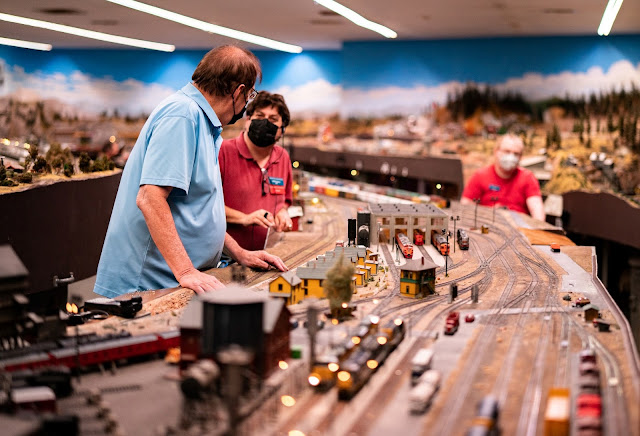Interested in Minimalism? How to Start Down a Simpler Path
Like many people, my first downsizing project was my wardrobe.
- I donated or consigned items I no longer wore or that no longer fit.
- I tossed old tee shirts, undergarments, and nightwear.
- I chose a base color for outfits.
- I limited shoes, handbags, and jewelry.
I donated a lot of nice-to-have but unused dishes, gadgets, serving pieces, and small appliances that were crowding kitchen drawers and cabinets. Once I freed up behind-doors storage, I moved items that I used most days – like the toaster, blender, and food storage canisters – into the cupboards. This created a lot of space on my countertops while still keeping those often-used items accessible.
I loved my clean, roomy counters, so it was easier than I thought to establish the new habit of putting those things away after each use.
There are many ways to start down a minimalist path – it's not a one-size-fits-all blueprint. Try any of these ideas to begin your journey.
12 first steps to help you explore minimalism
1. Visualize your pared-down life.
Make a list of three to five things that would change if you embraced minimalism. What would matter most to you?
- A living room that's ready for relaxing and socializing?
- A kitchen with clear counters ready for cooking and baking?
- A polished table ready for dinner or a favorite family board game?*
- A bedroom that's private and restful?
- A spa-like bathroom?
- Fewer but better toys that your kids can put away on their own?
- Fewer but better clothes that fit and flatter and make getting dressed a pleasure?
- A calendar with some empty slots for down time or spur-of-the-moment creativity?
- A balanced budget with a plan for getting out of debt?
- ... or some other improvement in your day-to-day life?
* This blog is reader-supported. When you buy through my links, I may earn a small commission.
2. Make your bed.
I know I sound like your mother, but this could be the first step toward creating a truly restful sanctuary. Remove and donate excess bedding and toss pillows. Enjoy the way a neat and pretty bed improves the feel of the entire room, and let this clarity and simplicity ripple outward.
3. Create one minimalist area.
Choose the top of your desk or bedside table, the coffee table, bathroom counter, or somewhere else. Remove everything from the space. Throw out the trash, donate the dusty, and find a home for the items you use.
Thoroughly clean the area and replace just one or two items that will make the space pleasant or efficient, such as a lamp and photo on your desk, a hand soap dispenser on the bathroom counter, or a bowl of fruit on the kitchen table. Or leave the area completely bare, if that's calmer and more inspiring.
Enjoy your minimalist space and commit to keeping it that way.
4. Donate duplicates.
It's relatively painless: Grab a box and fill it with unneeded items such as extra towels, vases, mugs, tee shirts, and the third set of dishes you never use. Realize that you have enough, and donate the box immediately if you can.
5. Dress with less.
You might think having fewer clothes makes it harder to dress well, but thousands of people have learned that a leaner wardrobe not only makes life easier but helps them discover their true style.
6. Use it up.
Do you have a hidden stash of partly-used hotel shampoos? Multiple mini containers of floss and toothpaste? What about:
- extra lipsticks and eyeshadow palettes
- expired medications
- canned foods shoved to the back of your pantry
- books you bought but never read
- clothing you've never worn
- recipes or hobby supplies you've collected for "someday"
Uncover these items wherever they're stored. Return them (if you still can), donate, sell, recycle, trash, or use them.
Use what you've collected, and become sensitive to the habits that are bringing clutter into your home. Don't buy more until you've used what you already own.
7. Unsubscribe.
Information is a wonderful thing, but when the flow is never-ending it becomes noisy and stressful.
If you're still getting newspapers or magazines (physical or digital), consider which ones you actually read, which ones inform or entertain you, and which ones make you discontented or simply get piled on the coffee table. Unsubscribe from those. Do the same with people you follow on social media. Evaluate RSS feeds, phone apps, and too-frequent emails from companies you once did business with.
What's left will be more useful and accessible.
8. Simplify food.
When you think about how much time you spend planning, shopping for, preparing, and cleaning up after meals, it's clear that food is not always simple. Try eating the same breakfast and lunch all week (with maybe a change for Sunday brunch), and rotate three to five dinner menus. If your family complains, call it research. Evaluate the experience together after a week or two.
9. Purchase mindfully.
A lot of clutter starts as impulse purchases. Try delaying unplanned purchases for a week or more. Keep a record of the items and their prices, and once the waiting period has passed, see if you still desire them as much as you did. If you could afford to buy whatever it is now, would you? Or have you forgotten all about it?
10. Make time.
Give yourself permission to resign from one activity. Only you know what has become a chore or an obligation instead of a challenge you thrive on or a rewarding chance to do good and share your talents. Saying "no" establishes a boundary and lets you save time and energy for what's most important to you.
Set aside the guilt, set aside other people's expectations, and create space for rest and serendipity. While you're at it, pare one activity from your child's schedule as well.
11. Save.
An emergency fund reduces stress and simplifies everything. If you're paying off debt, make minimum payments until you can save $1,000. If you aren't in debt, but you have no savings, set aside $5 or $10 per day until you've built a savings account. Here's how you might do that:
- Give up designer coffee and/or restaurant lunches.
- Cut back on cigarettes and/or alcohol.
- Reduce your entertainment costs.
- Sell stuff you don't need.
- Bank any bonuses, tax refunds, or other windfalls.
12. Pack for disaster.
A crisis makes things very clear. Where I live in California, a flood or wildfire could mean I have minutes to leave my home. What do you pack in such a situation?
- medications, glasses, hearing aids, CPAP machines, etc.
- phone and laptop, charging cords
- wallet/purse, keys
- important papers (these should fit easily in one file box)
- a change of clothes, some extra underwear and socks
- the same for your kids
- pet carrier/leash, food and water bowls, litter box
If you have time, you might grab some family mementos, or your child might want a favorite toy. But once your family is safe, and you have the bare necessities for survival and communication, you'll realize that everything else is either replaceable or unimportant.
Dare to be a beginner.
The beauty of being a beginner is that you can be curious and daring. You can ask for help, try and fail and try again, and be excited by your victories. Go ahead and take these steps in any order, and look forward to a new mindset and a simpler lifestyle.
Subscribe to receive my free printable
You'll love my book, The Minimalist Experiment: Fun and Easy Ways to Unlock Change, available on Amazon.
Big changes come from tiny steps taken over and over. The 27 thirty-minute projects and 9 try-it-for-a-day challenges help you investigate simplifying your life in six areas:
- physical clutter
- digital clutter
- your mindset
- your schedule
- your finances
- your personal well-being
Updated July 2023







Your columns are filled with such practical, simple, do-able advice and recommendations. Love!
ReplyDeletePS. One thing people might NOT want to do -- strive to create a kitchen nook as shown in the stock photo. The curtain is on the stove! Otherwise, it's gorgeous! ;-)
Ha! I see it now! Oops. Glad you liked the post.
Delete